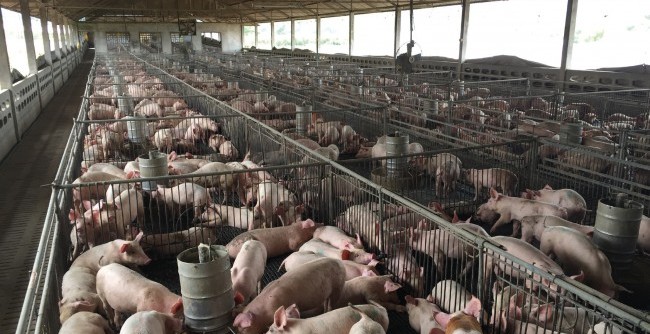The use of antibiotics in US pig farming is twice as high as in the UK, according to the Alliance to Save our Antibiotics.
An investigation by the campaign group shows overall use of antibiotics in US farming is five times higher than in UK production. This includes double the volume per livestock unit for pigs, while use in the US is nine to 16 times higher for beef cattle, three times higher for chickens, twice and five times higher for turkeys than it is in the UK.
The alliance say the figures highlight the need for the UK Government to consider antibiotic usage in food production when negotiating a post-Brexit trade deal with the US.
The figures, based on recently published data from the UK and the US, are due to be discussed at a conference at the Royal Society of Medicine in London today entitled ‘Antimicrobial resistance and agriculture: Is there a threat to public health and how is British farming responding?’
A recent report by the World Organisation for Animal Health (OIE) has estimated global farm antibiotic use by continent and found use by animal weight about 20% lower in Africa than in Europe. However, in the Americas it was about 80% higher than in Europe, and in Asia Pacific about 190% higher than in Europe, although only five countries reported data from Asia Pacific.
Speaking at the Oxford Farming Conference (OFC) in January, Ted McKinney, US Under Secretary for Trade and Foreign Agricultural Affairs USDA, said he was ‘sick and tired’ of hearing Britain’s concerns about chlorine washed chicken and US food standards.
“We would hold our food safety and environmental and animal welfare standards up against the UK any day of the week and twice on Sunday,” he said.
The ASOA’s Suzi Shingler said “If Mr McKinney wants something to worry about other than chlorine washed chicken, he might want to turn his attention to the extraordinarily high levels of antibiotics used in US meat production.
“Our investigation shows that US cattle farmers are massively overusing antibiotics. Trade negotiators who may be tempted to lift the ban on US beef should not only be considering the impact of growth hormones, but also of antibiotic resistance due to rampant antibiotic use.”
Kath Dalmeny of the Sustain food and health charity, and author of ‘Ten red lines for UK trade deals for food, farming and fishing’ said:
“Trade negotiators are champing at the bit to open up new markets for US meat and using the excuse of ‘cheapness’ to counter health concerns. But cheap meat comes at a high price – often lower standards of cleanliness, animal welfare and high use of antibiotics. Any trade deals must aim to support high standards so that human and animal health and welfare are protected.”
NPA response
NPA senior policy advisor Georgina Crayford said: “These figures highlight the points we have been raising about the need to ensure equivalence in standards when we negotiate new trade deals with the US. Antibiotic use, which the UK pig industry is making great strides in reducing and refining, is one just one area where very different standards exist globally.
“Sow stalls, banned in the UK in 1999, are still a big part of US pig production, while the feed additive ractopamine is also permitted, even though it has been banned in the EU for many years.
“Allowing imports produced to lower standards at lower costs into the UK under future trade deals would cause huge damage to our industry and do a great disservice to consumers.”
Gwyn Jones, chairman of the Responsible Use of Medicines in Agriculture (RUMA) alliance, said: “We welcome that through recording and submitting data, the US – one of the world’s biggest food producers – is actively engaging with the global One Health issue. However, direct comparisons between countries are not always helpful.
“The UK is among the leaders internationally in promoting responsible antibiotic use in farm animals, but doing so without impacting animal health and welfare – or food safety – requires a measured and specific approach. Unified action under a global One Health strategy may be the goal, but each country must identify its own priorities, approach and timescales to achieve appropriate and sustainable change.”




